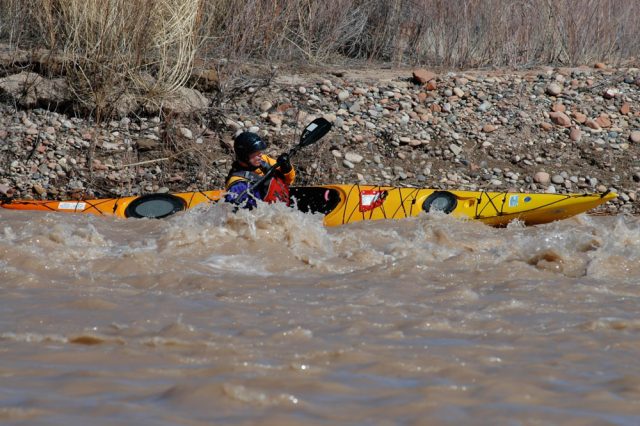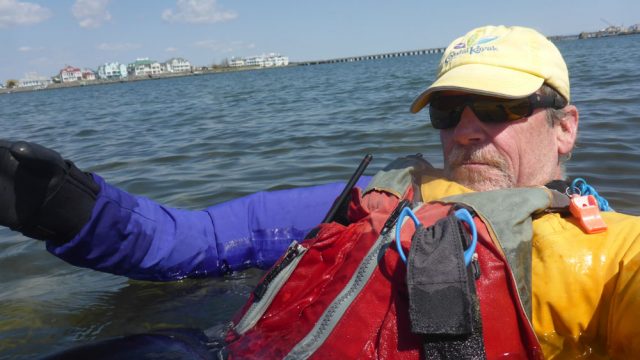
Paddling in the Colorado River in January
As we head into late fall the paddling opportunities improve at about the same rate that the weather deteriorates. The fall colors can make for very picturesque paddles, the surf gets better, and the inlets have much less boat traffic and more current (if you like that sort of thing). The question is what to wear?
We have posted many articles about hypothermia, cold shock, etc., but I’ve never talked about what I personally wear and when I wear it.
In early fall I usually wear wet suits. I start with a shorty or “spring suit” but, as the water gets colder, I will move to a full wetsuit. The colder the water the thicker the suit.
The downside to wet suits is that for them to work properly you have to get wet. As the neoprene traps a layer of water against your skin it will become heated and keep you warm. This works great for SUP surfing because you are constantly in and out of the water. But for kayaking, I usually don’t intend to get immersed over and over again. And if I do, it means I’m having a really bad day. So, as late fall hits and the water gets colder I will quickly shift to a loose-fitting dry suit which is super comfortable. And I can control how warm I need to be by changing what I wear underneath it.
I wear a loose-fitting dry suit to paddleboard surf into late fall. But once the water gets really cold it is no longer a safe option. The problem with these suits is that if you were to get a tear in it – say you wipe out and the fin cuts it (I know this from experience) – it will fill up with water quickly. Not only will you be exposed to the cold but it can be virtually impossible to swim in when full of water – a deadly combination.
For kayaking however the risk of that happening is very low and I will wear a loose-fitting dry suit all winter in any temperature. I do however always float around in the suit before paddling out to make sure of two things: One it isn’t leaking. And two, that I’m wearing the correct amount of insulation underneath.
About two winters ago I made a bit of a scene while paddling in the Ocean City Inlet. The water was 33 degrees and I wanted to check out my dry suit before getting into the rougher water. I paddled to a sandy beach on the edge of the inlet, got out, and was floating around to see if I would be warm enough in the event that I ended up outside of my kayak. It was just then that I realized that my kayak had been picked up by the surge from a wave and was now happily floating towards the mouth of the inlet. Fortunately I was feeling plenty warm in my dry suit so I swam after the kayak only to realize there were several people watching me from a pier with horrified looks on their faces. I gave them a big smile and a thumbs up as I reached my kayak and re-entered.


As far as winter paddleboard surfing, I try to avoid that by heading south! However, there are some very good thick wet suits. I used to surf year-round here in a neoprene dry suit (which was basically a really thick wet suit with water-tight gaskets). They use these types of dry suits for SCUBA diving in really cold environments.
If you love to paddle, you should really consider getting a dry suit. I have always used Kokatat and have been extremely happy with their quality and customer service. The good news is that you can buy them for as low as about $400. It may seem like a lot but I like to look at it as getting another kayak for only $400 – one for the summer and one for the winter!
Mitch Mitchell
ACA Open Water Instructor Trainer
ACA Level 2 SUP Instructor Trainer
BCU Level 3 Coach
